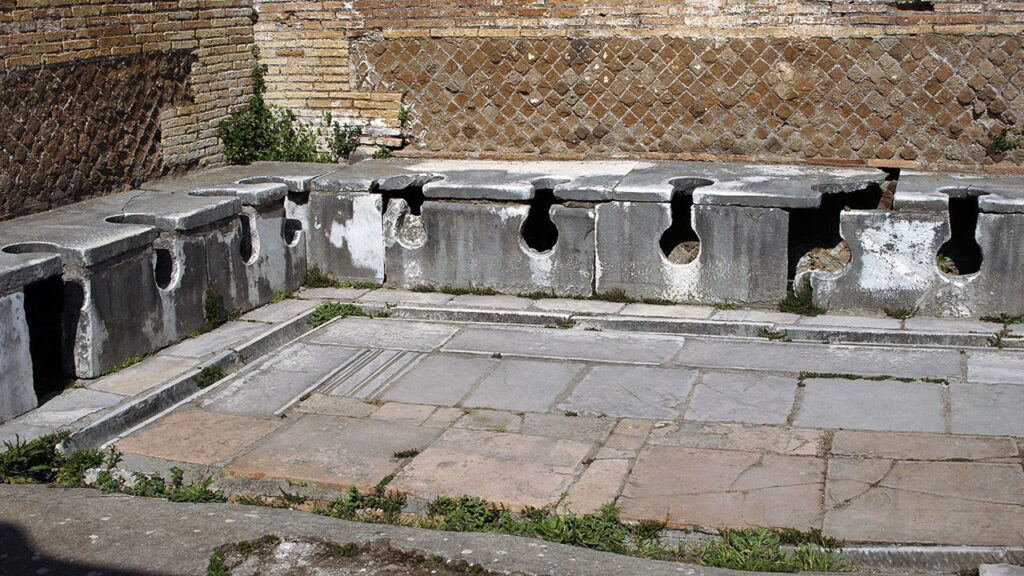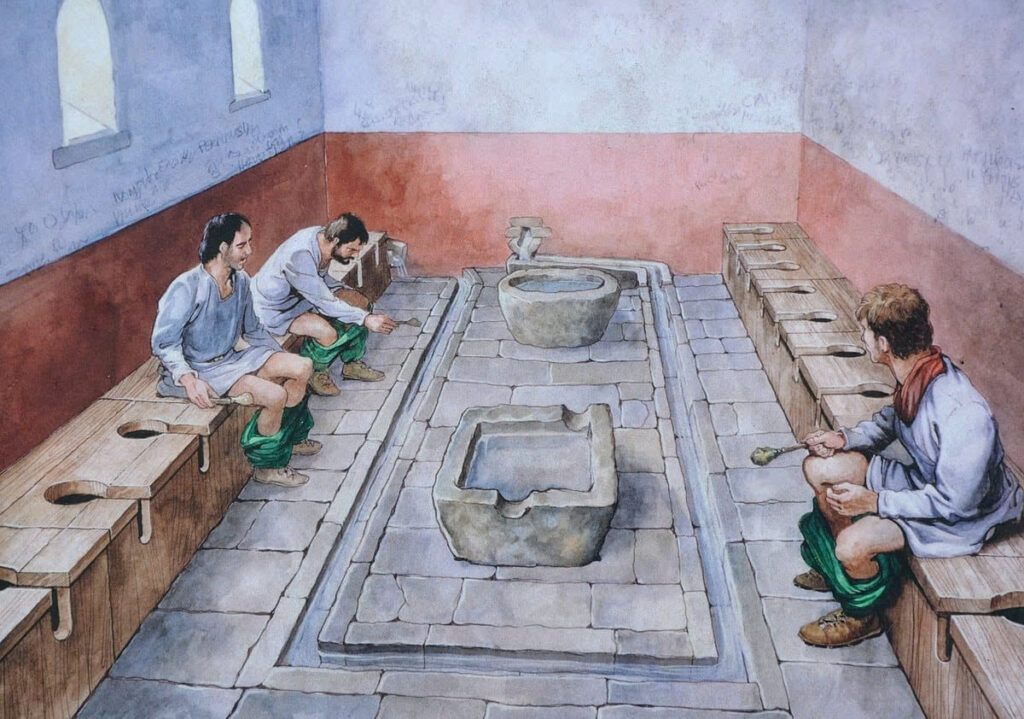Engineering Marvels of Sanitation

The ancient Romans were masters of infrastructure, and their public latrines stand as a testament to their extraordinary engineering and social sophistication. Far from being mere utilitarian spaces, these communal facilities were complex systems that reflected the very heart of Roman civilization.
A Technological Wonder of the Ancient World

By the 4th century CE, Rome boasted an impressive 144 public latrines that were nothing short of technological marvels. Designed as spacious galleries with marble seats, these facilities could accommodate 10 to 20 people simultaneously. The engineering was remarkable: water channels connected to aqueducts continuously flushed waste, creating a level of hygiene unprecedented for its time.
Innovative Hygiene Practices
The Romans’ approach to personal cleanliness was both practical and ingenious. Instead of toilet paper, they used communal sponges attached to sticks, soaked in vinegar for disinfection. While this might sound shocking by modern standards, it was an effective method for maintaining hygiene in a society that valued cleanliness and social interaction.
More Than Just a Bathroom: A Social Space

Public latrines were more than just places of necessity—they were social hubs that broke down class barriers. Wealthy patricians and poor citizens sat side by side, creating a unique environment of social equality. These spaces were typically free to use, providing a crucial public service that improved urban sanitation and quality of life.
A Symbolic Transformation of Space
The Romans’ pragmatic approach to space was epitomized by locations like the Theatre of Pompey. The very site where Julius Caesar was assassinated was later transformed into a public latrine—a striking example of Roman practicality and their ability to repurpose historical spaces.
A Legacy of Sanitation
The Roman public latrine system was far ahead of its time. After the empire’s fall, many of these innovative practices were lost, and it wasn’t until the late medieval period that Europe began to redevelop similar public hygiene systems.
Lasting Impact on Civilization
These communal facilities were more than just bathrooms—they were symbols of Roman ingenuity, social integration, and commitment to public health. They represented a sophisticated understanding of urban infrastructure that would inspire sanitation practices for centuries to come.
Conclusion: Flushing Away Misconceptions

The public latrines of ancient Rome reveal a civilization far more advanced and nuanced than many realize. They demonstrate that great societies are built not just on grand monuments and military conquests, but on fundamental considerations of human dignity, health, and social cohesion.
From their advanced engineering to their cultural significance, these latrines tell a story of innovation, equality, and practical problem-solving that continues to resonate today.

